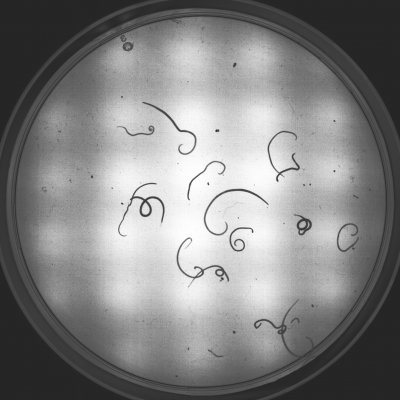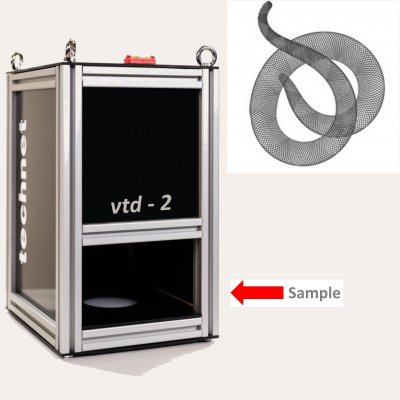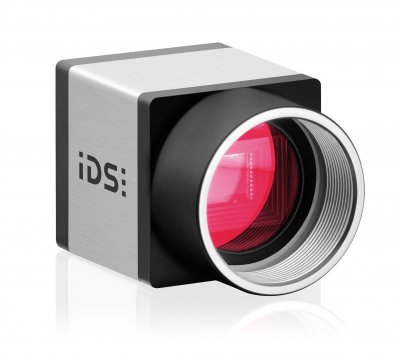Stuttgart-based technet GmbH has developed a system that uses a USB 3 uEye CP industrial camera from IDS to capture the contours and surface parameters of the parasites and determines the curvature energies of individual larvae from these data.
 Camera System Minimizes Health Risks When Consuming Seafood Products
Camera System Minimizes Health Risks When Consuming Seafood Products

Case Study from | IDS Imaging Development Systems
Over 6 million tons of fish are processed in the European Union every year. They are subject to strict legal controls in order to minimize health risks for consumers. Sea fish may contain parasites that can be dangerous to humans when consuming inadequately prepared products. The risk of infection depends on the degree of vitality of the parasites, such as anisocides. Stuttgart-based technet GmbH has developed a system that uses a USB 3 uEye CP industrial camera from IDS to capture the contours and surface parameters of the parasites and determines the curvature energies of individual larvae from these data. The curvature energy is then used to establish a connection to the metabolism and thus to vitality.
Due to the consumption of insufficiently cooked sea fish, several thousand people become infected annually with larvae of the nematodes Anisakis spp. or Pseudoterranova spp. with different clinical outcomes up to allergic reactions. In the EU, strict regulations therefore apply to the pre-treatment of raw foods (e.g. freezing at -20° C in the core over a period of at least 24 hours) and to the inspection of seafood products. Their main objective is to verify the viability of anisocides in fishery products.
Background
The parasites go through a complex life cycle and are ingested by fish through food as intermediate hosts. Through fishing activities they can get into seafood products and be transferred to humans. In the course of food controls, samples are taken from the tissues of fish and squid and analysed in laboratories for the presence of nematode larvae. In particular, the degree of their vitality is an indication of a possible risk to human health.

Nematode larvae (Anisakis spp.) of different vitality from a tissue sample (transmitted light (NIR)/petri dish)
In microbiology, vitality is determined by the reproduction rate (bacterial count). However, this standard procedure cannot be used for nematode larvae. Therefore, in the seafood sector, tissue samples are dissolved by artificial digestion, without damaging the larvae contained in them. In a subsequent examination, a rough classification of vitality is made by visually evaluating their state of motion and assigning them to the states "living" or "dead". However, the state of motion is not a reliable indication of the infectivity of nematode larvae, as they can temporarily fall into a non-moving state.

Curvature states of a single nematode larva (Anisakis simplex s.p.) within 2 seconds
Test reliability based on image processing
The Viability Test Device (VTD) from technet GmbH is a measurement system that addresses these uncertainties. It performs an automated, independent optical inspection. The system is based on a USB 3.0 camera from IDS Imaging Development Systems GmbH. It is positioned vertically above a petri dish. Within a narrow wavelength range in the near infrared spectrum (NIR), series of images are generated from the samples using transmitted light, which are supplemented by infrared temperature measurements. Camera, temperature, illumination, position and time data are written into each frame. This comprehensive raw data examination protocol ensures a high level of traceability of the test results.
The camera of the VTD delivers image series of 2 frames per second, from which static and dynamic forms are derived. They serve as decision parameters for further processing. In the series of images, individual larvae are identified, their 2D contours determined and geometric data mapped onto a 3D membrane model of the marine parasite under the (realistic) assumption of a circular cross-section. With this model, mechanical properties of the larvae - especially their curvature energies - are calculated taking into account biological details. Image acquisition thus enables a reliable and reproducible determination of vitality, independent of movements and visual assessments of the examinees.
A UI-3370CP-NIR-GL Rev.2 industrial camera is used in the VTD. It is equipped with the highly sensitive, fast 4 megapixel CMV4000 CMOS sensor from CMOSIS. The sensor offers a resolution of 2048 x 2048 pixels. Thanks to the innovative pixel architecture, fixed pattern noise and hiss are considerably reduced. A pipelining feature also allows further exposure while the sensor data is being read out, which speeds up the readout and effectively reduces motion blur. With an extremely large optical format of 1", the sensor features large pixels for extremely low-noise and high sensitivity to light. "The square camera chip of the UI-3370CP delivers images from the circular petri dishes with high information density and minimal information loss through unused image areas. The camera provides us with all the necessary data quickly and with high quality, which is ideal for our inspection system," explains Michael Kroeger, physicist at technet and expert for biological applications of membrane technologies.

Generation of transmitted light patterns using the camera and calculation of the vitality state of the larvae
Outlook
The globalisation of the seafood market and the associated stricter controls and security mechanisms make automated testing systems indispensable. With the Viability Test Device technet offers a fast and objective monitoring system for veterinary and food laboratories. The independence from human factors and the automatic logging are clear advantages for use in everyday laboratory life. In this specific case, the throughput of raw fish samples can be significantly increased. With the help of image processing, the system reliably identifies the hazard level of marine parasites. This makes it more difficult for the tiny survival artists to hide their vitality and infectivity. It can, on the contrary, guarantee us consumers greater food safety and an untroubled taste of delicious seafood. Bon appetit!
Client
technet GmbH is a software and consulting company for the planning and calculation of lightweight structures, laser scanning for high-precision registrations and the integration of heterogeneous geodata.

Camera
USB 3 uEye CP – Incredibly fast, incredibly reliable, incredible sensors
Interface: USB 3.0
Model: UI-3370CP-NIR-GL Rev.2
Sensor type: CMOS
Manufacturer: CMOSIS
Frame rate: 80,0 fps
Resolution: 2048 x 2048 px / 4,19 MPixel
Shutter: Global Shutter
Optical class: 1"
Dimensions: 29 x 29 x 29 mm
Weight: 52 g
Connector: 8-pin Hirose connector
Applications: Microscopy, machine vision, motion control, traffic surveillance, automotive applications, etc.
About IDS Imaging Development Systems GmbH
The industrial camera manufacturer IDS Imaging Development Systems GmbH develops high-performance, easy-to-use USB, GigE and 3D cameras with a wide spectrum of sensors and variants. The almost unlimited range of applications covers multiple non-industrial and industrial sectors in the field of equipment, plant and mechanical engineering. In addition to the successful CMOS cameras, the company expands its portfolio with vision app-based, intelligent cameras. The novel image processing platform IDS NXT is freely programmable and extremely versatile.
The content & opinions in this article are the author’s and do not necessarily represent the views of AgriTechTomorrow
Comments (0)
This post does not have any comments. Be the first to leave a comment below.
Featured Product

